|
Peter Bent Brigham Hospital. Hematology Division. 721 Huntington Avenue. Boston. Massachusetts 02115 USA I would like to express sincere thanks on behalf of the Stohlman
children and myself to Dr. Rolf Neth for arranging for these memorial
lectures and for the privilege of speaking to you briefly about
the late Fred Stohlman. As most of you know, Fred and his lovely
wife, Bernadette, died tragically on September 8, 1974 when the
explosion of a terrorist bomb plunged their plane into the Ionian
Sea. This senseless act of violence deprived 4 children of their
beloved parents and ruthlessly terminated. at the age of 45, the
career of a brilliant investigator and physician. Much has since
been published concerning Fred Stohlman's outstanding achievements
and I will not dwell on these accomplishments. Rather I would like
to recall to you, his friends, associates and fellow scientists,
some of the human and endearing traits of this unique individual.
Fred was very young when he graduated from Georgetown Medical School,
in fact he was only 21 when I first met him as an intern on the
3rd Medical Service (Tufts) at Boston City Hospital. As the staff
photograph shows (Fig. I) he did indeed look very boyish and youthful.
Following his medical training and 9 years at the National Institute
of Health where he worked closely with George Brecher, Fred returned
to Boston in 1962 and became Chief of medicine and research at St.
Elizabeth's Hospital and professor of medicine at Tufts Medical
School. There he built up a staff and trained hematology fellows
many who were to become world famous. Some of his staff members
are shown in the accompanying photograph (Fig.2). Fred's involvement
and concern for his fellow workers and associates was proverbial;
his intense interest in discussion of research problems is demonstrated
in this photograph (Fig. 3). Among his numerous activities Fred
probably enjoyed participation in meetings and symposiums most of
all. His expertise as a chairman and his ability in editing proceedings
of conferences was universally recognized. He organized meetings
which attracted outstanding scientists from all over the world and
Fred developed warm and lasting friendships on an international
basis. Dr. Stohlman was not only a distinguished scientist and physician,
he was also a warm and congenial human being who loved good food,
good drink and pleasant companionship. He probably satisfied a life
time ambition during an international meeting when he made an impromptu
performance as conductor of the Munich Orchestra as shown in this
photograph (Fig. 4). 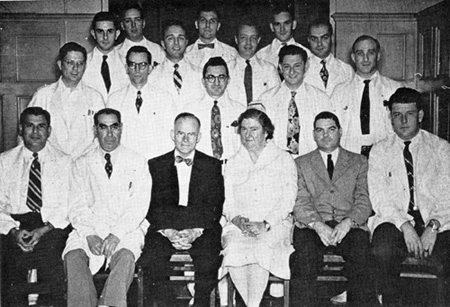 Fig.1 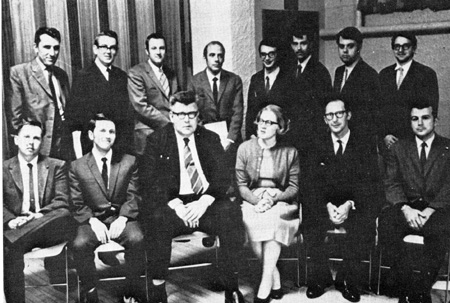 Fig.2 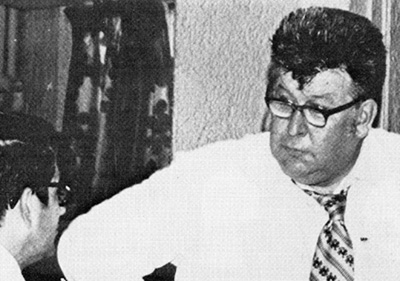
 Fig.4 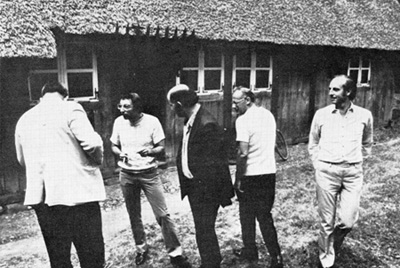 Fig.5 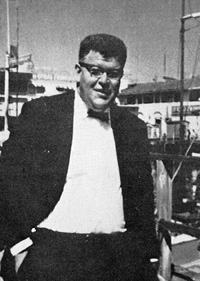
|